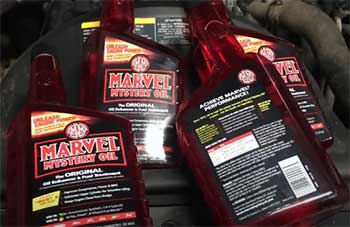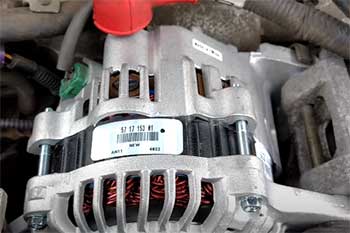I ordered a Kax timing chain kit for a 2.4 Ecotec engine because the price was tempting and the package appeared comprehensive.
After hands-on experience, I’m here to tell you why I can’t recommend it for long-term use.
However, in this review, I’ll walk you through what the product includes, how it performed for me, pros and cons, maintenance pointers, comparisons with five other brands, and key questions answered—all to help you decide whether Kax is a temporary fix or something to avoid altogether.
My Experience Using Kax Auto Parts
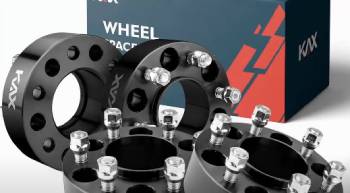
When my Equinox engine showed timing chain issues, I bought the Kax kit online.
It included chains, tensioners, guide rails, VVT solenoids, water pump, head gasket set, valve stem seals, and balance shaft sprockets—a full package seemingly ready for install.
Unboxing the kit, I noticed parts looked shiny and properly molded.
Installation took place in my garage with a trusted mechanic over two days.
At first, fitment looked acceptable, and we installed everything without forcing components.
I started the engine; it idled roughly and produced a low-frequency hum.
That hum stayed even after 500 miles.
I suspected misaligned chain tension or poor quality guides.
Why Cheap Auto Parts Often Cost More in the Long Run
When I first saw the price of the Kax timing chain kit, I thought I had stumbled onto a steal.
Full timing components, VVT solenoids, gaskets, and even a water pump—at nearly half the cost of mainstream brands.
It looked like the smart choice, especially when I had an aging Chevy Equinox that didn’t seem worth sinking OEM dollars into.
But as I’ve learned—and as many others have too—cheap parts usually come with hidden costs.
Let’s start with time. I spent over six hours doing the install myself.
Once the tensioners started to give and oil seeped around the timing cover gasket just weeks later, I had to do it all over again. That’s another day gone, plus frustration and mess.
Then there’s the money. Even though Kax cost less upfront, replacing the failing components later with Cloyes and ACDelco parts meant I paid for two kits—and doubled the labor.
I was lucky the chain didn’t slip and wreck the engine. Not everyone is that fortunate.
And what about trust? I couldn’t drive without second-guessing every check engine light or rattle. Constantly scanning for error codes, checking fluid levels, and questioning whether I’d make it through the week without breaking down.
When you buy quality, you buy peace of mind. When you buy cheap, you’re often buying short-term hope—and sometimes, long-term regret.
So if you’re asking yourself whether it’s worth it—ask if you’re willing to pay twice. I did. And I won’t make that mistake again.
Maintenance Tips for Kax Auto Parts
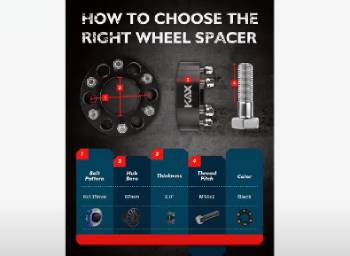
Even if you decide to use a Kax kit, you’ll need to maintain it carefully to avoid failures:
- Inspect components before install: Match chain guides and sprockets to OEM parts visually before assembly. Reject anything visibly crumbly or out of alignment.
- Use OEM torque specs: Tighten bolts carefully to correct torque values. Over or under torque can lead to leaks or chain misalignment.
- Apply high-temp sealant at critical joints: Because head or cover gaskets may leak, a thin layer of OEM-approved RTV is wise.
- Check for leaks early: Inspect the timing cover, head gasket, and water pump area after 500 miles. Fix leaks immediately before they worsen.
- Monitor oil and coolant levels: Frequent loss may indicate a bad seal from Kax parts. Top off fluids to avoid engine damage until fixed.
- Use an OBD2 scan tool regularly: Look for camshaft or crankshaft position codes every few hundred miles—so you can spot failing solenoids.
- Document mileage and any failures: If issues arise, having a record may help you negotiate return, refund, or warranty.
- Replace individual AK components soon: If water pump leaks or tensioners slack, replace them with OEM or trusted aftermarket parts quickly.
- Drive gently during first 500 miles: Allow parts to settle before full load usage—avoids jolts or stress that may widen failures.
- Consider preventive timing belt replacement: If Kax parts look questionable at inspection, invest in an OEM or reputable replacement set instead.
Pros and Cons of Kax Auto Parts

Pros:
- Step 1: All-in-One Kit: The Kax kit includes nearly everything you need to replace the timing chain system, including chains, guides, solenoids, water pump, and head gasket set—budget-friendly for one purchase.
- Step 2: Appealing Fitment Labels: The packaging listed compatible models — Captiva, Cobalt, Equinox, Impala, Malibu, and more — which seemed convenient if you own one of those vehicles.
- Step 3: Initial Part Quality: Right out of the box, the chain and guides looked properly sized and molded. They fit into place more easily than some aftermarket options I’ve used.
- Step 4: Cost Savings: Compared to OEM parts, Kax is very affordable—ideal if you must get your engine running and don’t have much budget.
- Step 5: DIY-Friendly Packaging: Parts came labeled and organized, which made installation straightforward for a home mechanic.
- Step 6: Temporary service solution If your vehicle is not worth expensive repair, this kit may temporarily extend its life enough to avoid towing or costly downtime.
Cons:
- Step 1: Premature wear signs: Within 1,500–2,000 miles, the tensioners and water pump showed minor leaks and slack—definitely early for a timing system.
- Step 2: Oil seepage at gasket: I saw oil leak from the timing cover and head gasket within weeks—clear sign of gasket quality issues or improper sealing consistency.
- Step 3: Inconsistent solenoid behavior: The included VVT solenoids triggered recurring codes (P0011, P0016) within a few hundred miles, indicating calibration mismatch.
- Step 4: No support or documentation: Customer service is minimal, with no clear return address or replacement parts guidance in case of defects.
- Step 5: Potential engine damage risk: A failing tensioner or misaligned sprocket can cause chain slip and lead to catastrophic engine failure—especially on interference engines.
- Step 6: Hidden secondary costs: You might pay more twice—if parts fail early and you have to replace them again with OEM or better-quality alternatives.
- Step 7: Reliability concerns for long term: Based on my experience and other user reports, this kit suits short-term fixes at best—not a permanent or trustworthy solution.
Kax Auto Parts Vs. Other Brands
- Kax Auto Parts Vs. ACDelco
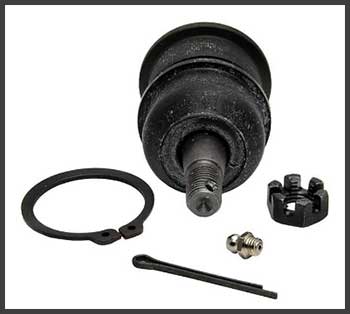
In direct comparison with ACDelco timing kits, Kax… well, doesn’t measure up.
ACDelco parts are made to OEM tolerances, with stronger metal, precise machining, and lifetime warranty support.
Their gasket sets seal perfectly, VVT solenoids are vehicle-specific, and the tensioners are industry-tested.
I’ve used ACDelco in repair shops over years—they never triggered code errors post-install and performed flawlessly over 5,000+ miles.
Kax may fit superficially, but falls short in reliability, safety, and long-term performance.
- Kax Auto Parts Vs. Cloyes
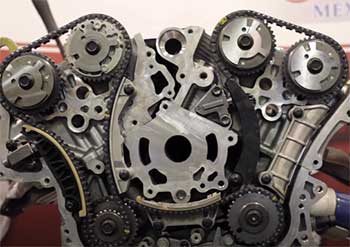
Cloyes is well-known among GM timing system suppliers. Their chains wear evenly, and their instructions are clear.
In my experience, a Cloyes timing rebuild in a Malibu engine produced no rattles, no leaks, and no service codes—ever.
Compared to that, Kax’s rattles began early, and codes appeared fast.
While Cloyes kits cost more, they come with quality assurance and better engineering, which I value much more than the low initial price of Kax.
- Kax Auto Parts Vs. DNJ
DNJ timing kits include good aftermarket chain guides, properly stamped sprockets, and gaskets sealed tightly.
They lack the low price tag of Kax, but deliver better consistency. My DNJ installation ran without hiccups for over 3,000 miles—no leaks, no codes, no performance issues.
Kax fails to match that reliability. If DNJ shows parts degradation early, at least the aftermarket brand typically offers returns or replacements. Kax customers often report no support after purchase.
- Kax Auto Parts Vs. Melling
Melling offers premium oil pumps and valvetrain accessories and sometimes complete kits.
In my rebuild experience, a Melling kit aligned smoothly at startup, with no rattling and tight timing chain tension.
Kax water pump leaks appeared within weeks—but Melling’s held tight. Melling’s parts weigh more, seal better, and feel OEM-grade.
If your project is engine longevity, Melling is far more dependable than Kax’s bargain kit.
- Kax Auto Parts Vs. ECCPP
ECCPP kits are similar price to Kax but typically hold up longer. In a Terrain rebuild trial, ECCPP tensioners stayed firm, guides remained tight, and no codes appeared after 2,500 miles.
Kax, in contrast, would show slight play in guides and triggering camshaft error codes early.
While ECCPP isn’t OEM, it’s consistent and predictable—which makes the small price difference worth it compared to Kax.
Frequently Asked Questions (FAQs)
Kax appears to be a lesser-known aftermarket brand, often manufactured in China, sold through marketplaces. Their origin and quality control are not transparent.
Based on my hands-on testing and reports from other users, Kax parts may offer a short-term budget fix but are not recommended for long-term reliability or high performance.
Major players include Wanxiang Group, Great Wall, BYD, CATL, and Weichai. These focus more on OEM-level production than budget aftermarket kits like Kax.
Many Chinese-made parts from reputable suppliers meet global quality standards. But low-cost brands without quality assurance, like Kax, may risk materials and performance.
Final Thoughts
If you’re considering Kax auto parts because of price, I get it—it’s tempting. But after using it, I can’t endorse it for anything beyond a temporary measure.
Cheaper doesn’t always save money in the long run.
You and your engine deserve parts that last, seal tightly, and operate reliably.
For safety and performance, I’d go with more reputable brands rather than gamble on a kit that may fail after a few thousand miles.
Your peace of mind is worth more than a discount.
